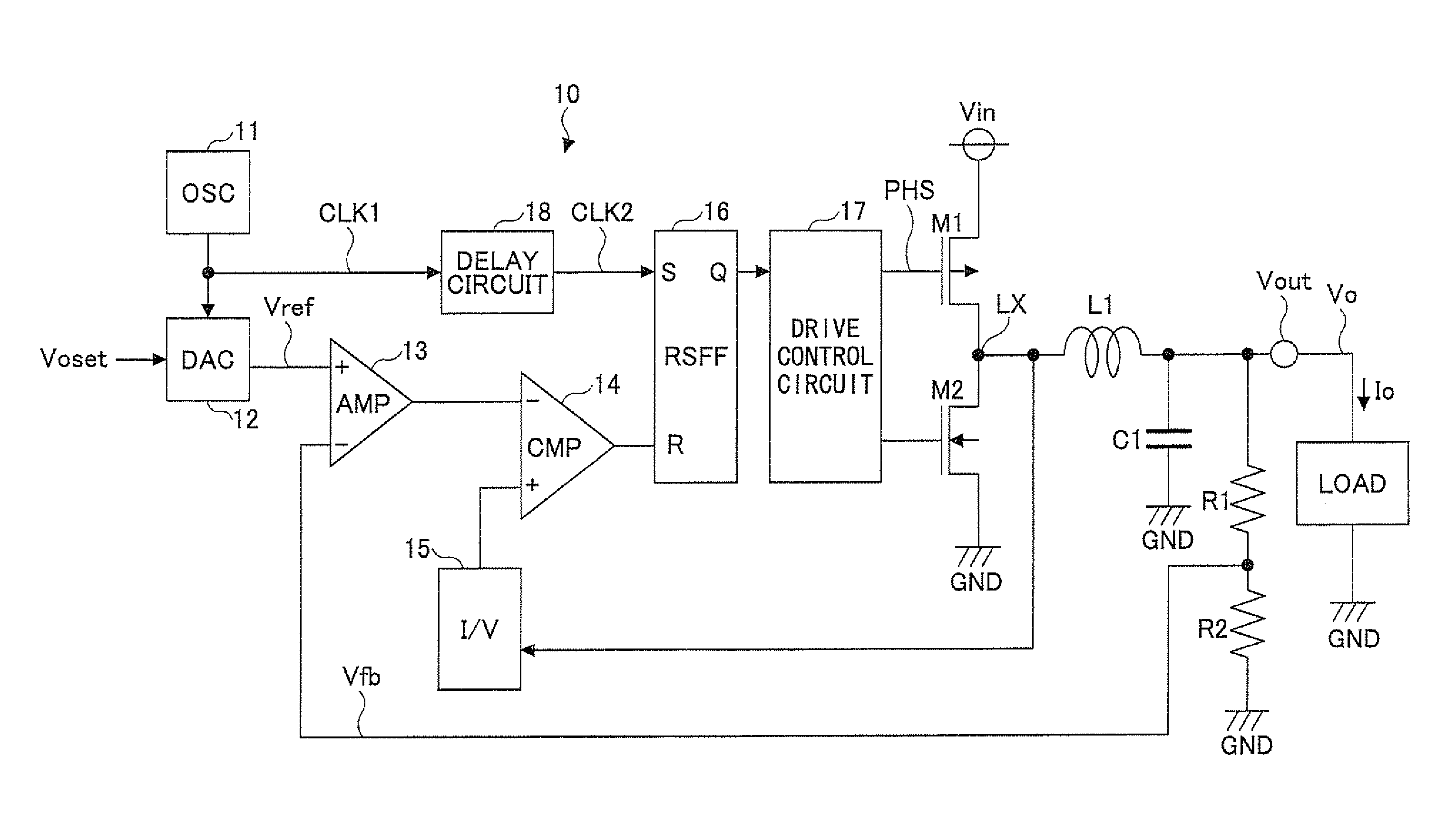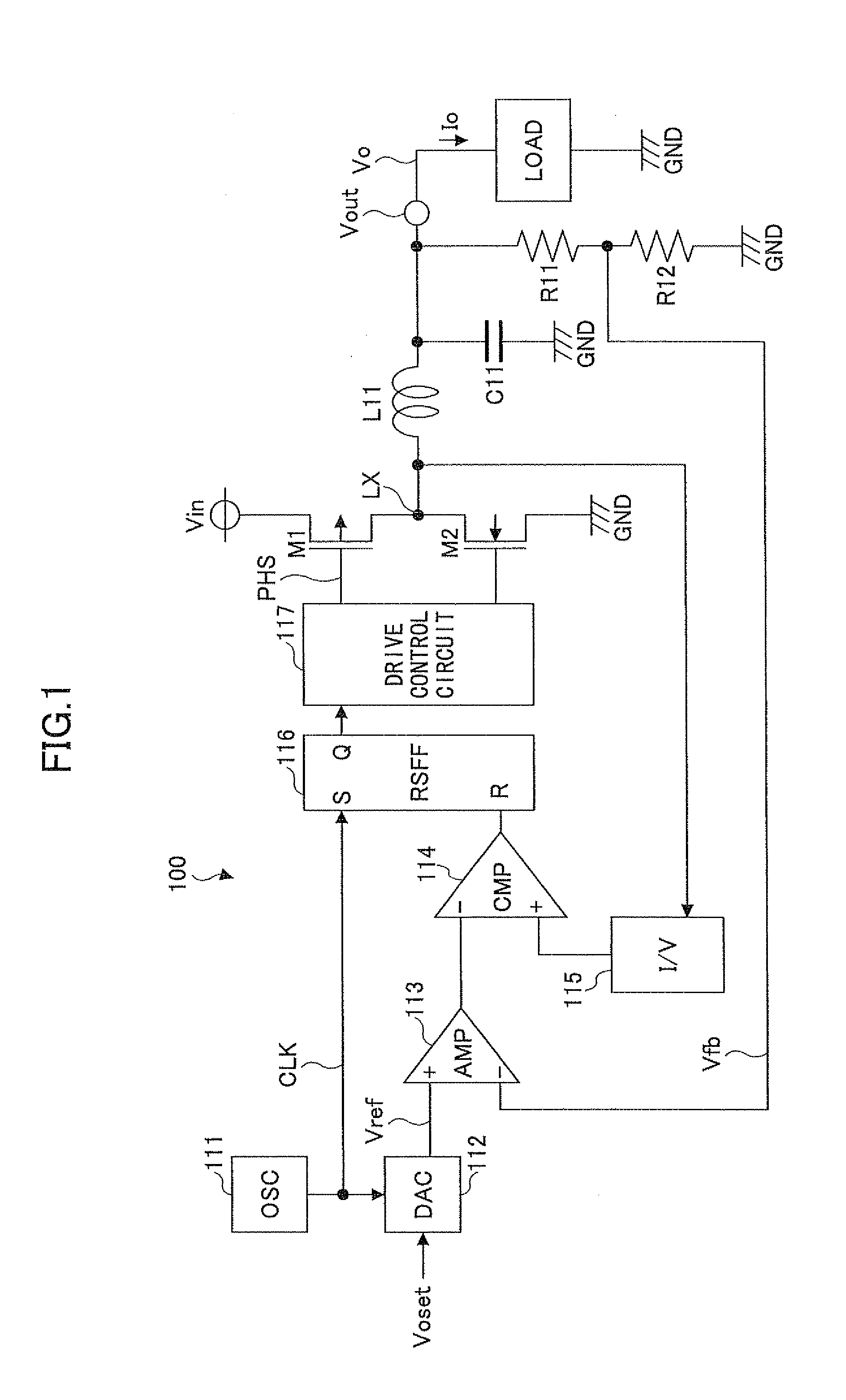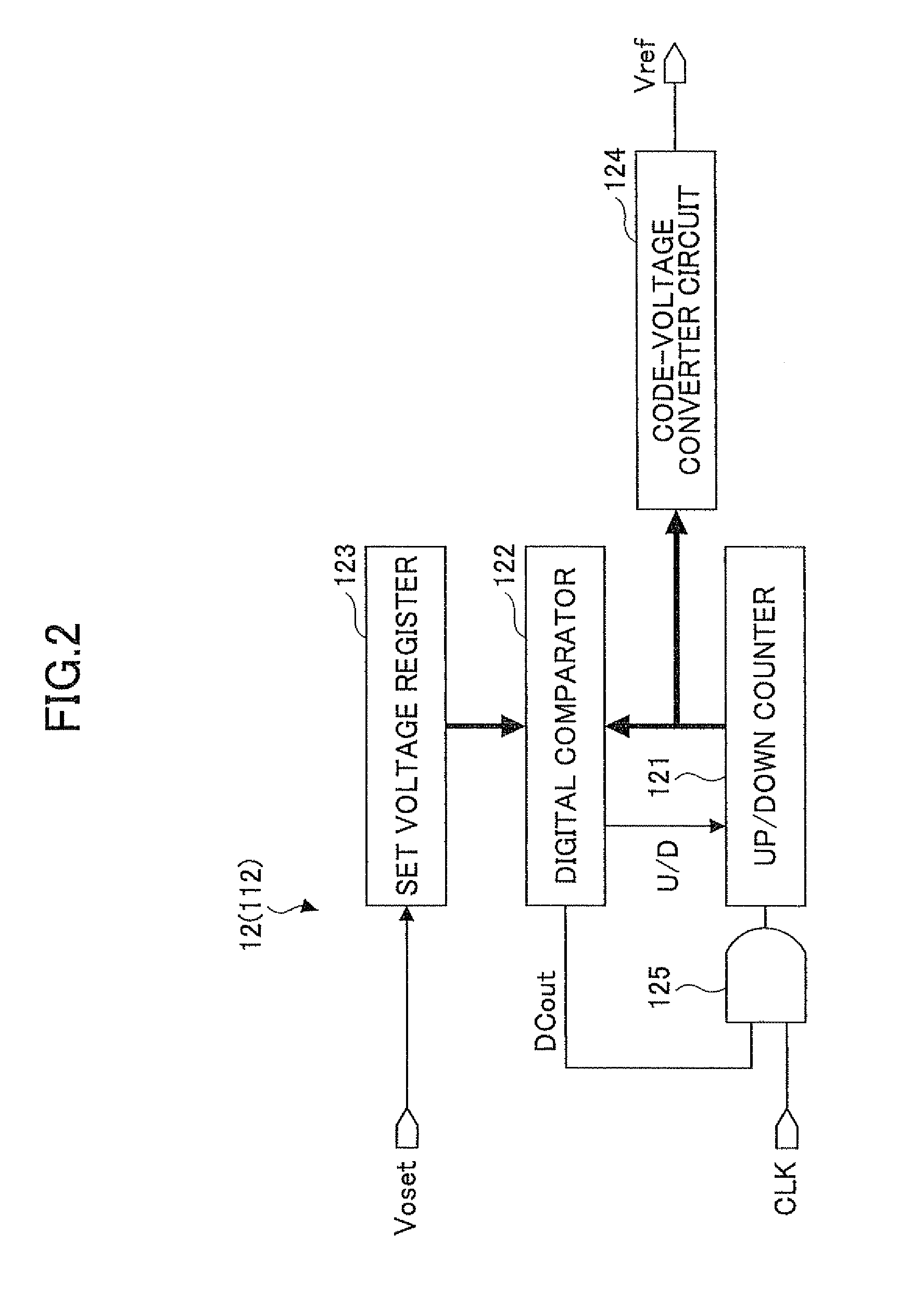Variable voltage DC-DC converter
a dc-dc converter and variable voltage technology, applied in the direction of dc-dc conversion, power conversion systems, instruments, etc., can solve the problems of reduced response speed in changing the output voltage of dc-dc converters, increase in current consumption, and substantial increase in power consumption
- Summary
- Abstract
- Description
- Claims
- Application Information
AI Technical Summary
Benefits of technology
Problems solved by technology
Method used
Image
Examples
Embodiment Construction
[0039]A description is given below, with reference to the accompanying drawings, of an embodiment of the present invention.
[0040]FIG. 4 is a circuit diagram illustrating a DC-DC converter according to the embodiment of the present invention.
[0041]Referring to FIG. 4, a DC-DC converter 10 of this embodiment, which is a current-mode controlled DC-DC converter, includes an oscillator circuit (OSC) 11, a d / a converter (DAC) 12, an error amplifier circuit (AMP) 13, a delay circuit 18, a pulse-width modulation (PWM) comparator (CMP) 14, an inductor current detector circuit (I / V) 15, an R-S flip-flop circuit (RSFF) 16, a drive control circuit 17, a switching transistor M1 formed of a PMOSFET, a synchronous rectification transistor M2 formed of an NMOSFET, an inductor L1, a capacitor C1, a resistor R1, and a resistor R2.
[0042]The delay circuit 18 is connected between the oscillator circuit 11 and the SET input S of the R-S flip-flop circuit 16.
[0043]The oscillator circuit 11 outputs a first...
PUM
 Login to View More
Login to View More Abstract
Description
Claims
Application Information
 Login to View More
Login to View More - R&D
- Intellectual Property
- Life Sciences
- Materials
- Tech Scout
- Unparalleled Data Quality
- Higher Quality Content
- 60% Fewer Hallucinations
Browse by: Latest US Patents, China's latest patents, Technical Efficacy Thesaurus, Application Domain, Technology Topic, Popular Technical Reports.
© 2025 PatSnap. All rights reserved.Legal|Privacy policy|Modern Slavery Act Transparency Statement|Sitemap|About US| Contact US: help@patsnap.com



